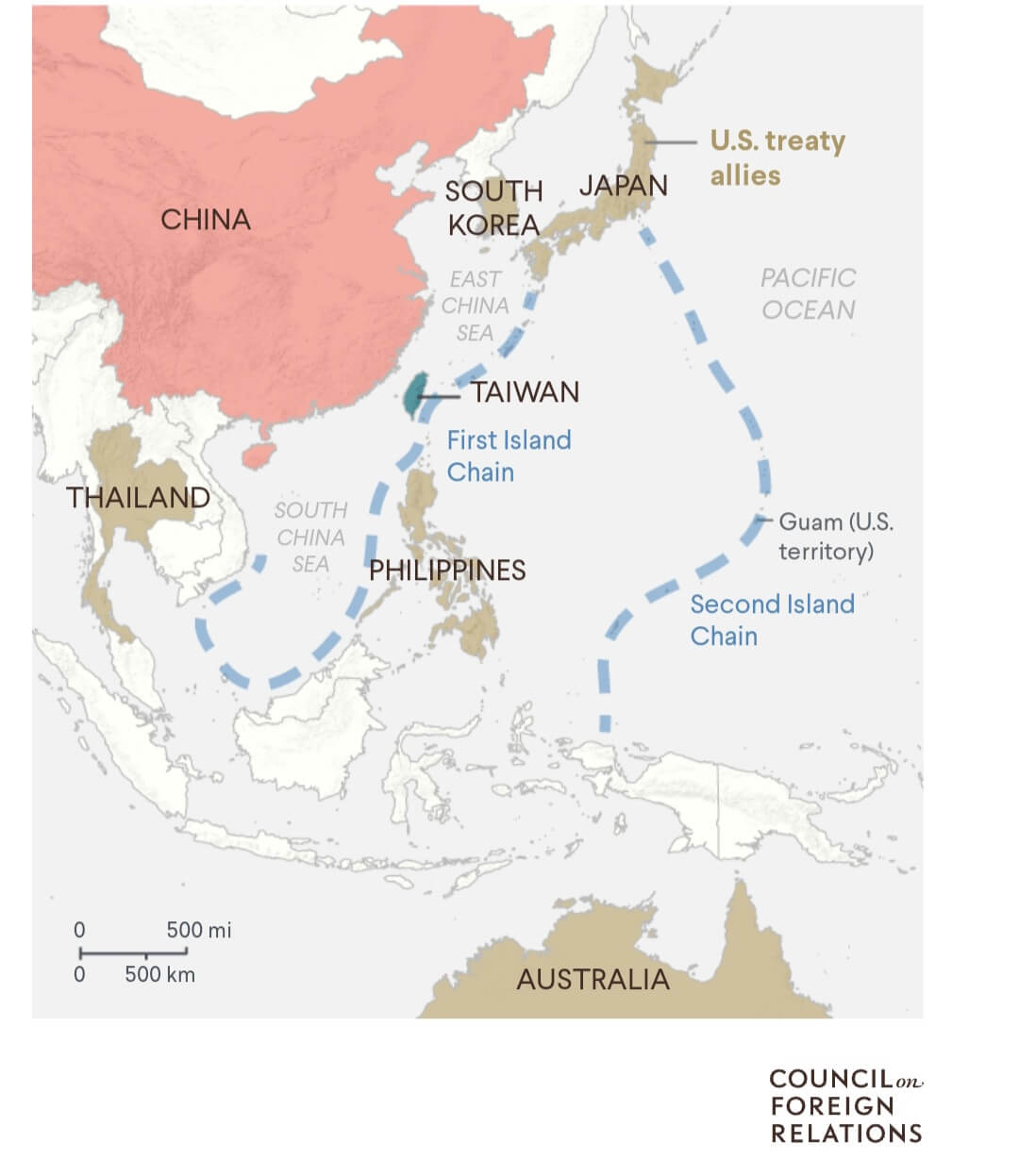
NOTE TO READER: The blue line should go between Taiwan and China because Taiwan is an integral component of the First Island Chain.
Introduction

In an era where global dynamics are rapidly evolving, the strategic importance of the Pacific region in maintaining America’s defense capabilities cannot be overstressed. A key element, often overlooked even by the well-informed, is the mid-Pacific chain of islands. These islands are not just dots on the map but pivotal assets in the geopolitical chessboard, ensuring America’s military and strategic superiority in the Asia-Pacific.
Strategic Significance of the Compacts of Free Association
The First Island Chain’s Defense Backbone
The First Island Chain, extending from Japan through Taiwan to the Philippines and Borneo, forms a natural barrier crucial for regional stability and security. However, its defense is untenable without a secure base of operations in the central Pacific, provided by the Compacts of Free Association (COFA) states: Palau, the Federated States of Micronesia, and the Republic of Marshall Islands.
Guardians of the Central Pacific
These nations, through COFA agreements with the U.S., offer more than just strategic locations; they ensure American military mobility and operational freedom across a vast east-west corridor. This not only deters potential adversaries but also fortifies America’s defense posture across the Pacific.
Financial and Diplomatic Dimensions
A Cost-Effective Investment
At a glance, the financial commitment to the COFA states—$2.3 billion over 20 years—may seem substantial. However, when contextualized within the broader U.S. defense budget and the strategic value it brings, this investment is not only prudent but also cost-effective. The COFA agreements represent a fraction of America’s defense expenditure but play a critical role in maintaining peace and stability in the region.
Reciprocal Benefits
Beyond financial aid, the COFA agreements encompass deeper ties, including the right for COFA citizens to work in the U.S., many of whom serve in the U.S. military at commendable rates. This reciprocal relationship strengthens cultural and economic bonds, enhancing the strategic partnership beyond mere financial transactions.
Why This Matters
In the current geopolitical climate, where the balance of power in the Pacific is increasingly contested, the role of the COFA states becomes even more critical. The strategic locations of these island nations offer unparalleled advantages for surveillance, rapid deployment, and logistical support, essential for deterring aggression and ensuring regional security. The renewal of the COFA agreements is not just a matter of policy but a cornerstone of America’s Pacific defense strategy.
Conclusion
“The strategic landscape of the Pacific is intricately defined by the mid-Pacific islands, which are essential for our defense strategy. Dale A Jenkins, a Senior Advisor to Americans for a Stronger Navy and the author of ‘Diplomats and Admirals,’ poignantly underscores the critical significance of these islands within our defense framework—a fact that often eludes even the well-informed.”
As we navigate the complexities of contemporary geopolitics, the renewal of our agreements with these islands transcends mere policy—it’s an essential investment in the bedrock of America’s security and its leadership stance in the Pacific.
For entities like the Americans for a Stronger Navy and all advocates for regional peace and stability, championing these agreements is not just strategic but an imperative.
These partnerships stand as a testament to our enduring commitment to our Pacific allies, underpinning the collective security that safeguards our nation’s interests and upholds the values we share with our friends across the vast expanse of the Pacific.

